1976 Chowchilla bus kidnapping survivors relive their terrifying ordeal
Produced by Chris Young Ritzen, George Osterkamp, Mead Stone and Gary Winter
It was one of the largest kidnappings in U.S. history. A school bus with 26 children was stopped by three armed gunmen as they headed home from the Dairyland Elementary School in the small California town of Chowchilla. The men were wearing pantyhose over their faces.
“Where their eyes were, it was like, it almost looked hollow,” recalls survivor Larry Park, just 6 years old at the time. “It was like looking at death.”
The children and their school bus driver were transferred to vans and were driven for nearly 12 unbearable hours before being buried alive inside a truck trailer underground and held hostage in the dark for 14 more hours before they made a harrowing escape.
This week, as their convicted captor faced a parole board, some of the survivors of that 1976 kidnapping share their emotional, personal stories of bravery and helping each other survive the unknown.
WHERE ARE THE CHILDREN?
Just outside Chowchilla on July 15, 1976, the frightening journey began.
Jennifer Brown Hyde | Survivor: We start driving down the road …
Larry Park | Survivor: I’m wondering how it was going to feel to die.
Larry Park: I was too scared to move.
Twenty-six terrified children – some as young as 5 – were staring down the barrel of a sawed-off shotgun. Three masked men had hijacked the Dairyland Elementary school bus. One had the shotgun, one drove the bus, and one followed behind in the white van they’d used to block the road.
Jennifer Brown Hyde: Edward … kept telling his kids just be quiet, sit down, do what they say. … Edward was speaking in a harsh tone, and that normally was not the Edward that we knew and loved.
Jennifer Brown Hyde: Eventually, the bus went off the road, down into a dry riverbed.
Larry Park: Into this big grove of bamboo that were taller, actually, than the bus.
Jennifer Brown Hyde: And then as I looked out one of the side windows, I saw that there was another van that was parked there …
AUDIO: JENNIFER BROWN, AGE 9: …They parked the bus. And there was another green — there was a green van down there waiting for us.
Even at the age of 9, little Jennifer Brown seemed to know the horror that day should be documented. She later made this recording with her mom:
AUDIO: JENNIFER BROWN, AGE 9: And those two guys standing from the bus door to the van door with guns with pantyhose over the head so we wouldn’t run out. … and then, see, they pulled the van right up to the bus door.
The kidnappers herded the stunned children from the bus into those two vans.
Jennifer Brown Hyde: We had to jump from the bus to the van.
AUDIO: JENNIFER BROWN, AGE 9: So they wouldn’t see any feet prints.
Jennifer and her 10-year-old brother Jeff were immediately separated.
AUDIO: JENNIFER BROWN, AGE: And they took off. … And I kept telling my friends that I wanted Jeff.
Jennifer and Larry Park were forced into the second van, already jam-packed with children and the bus driver, Ed Ray. Threatening them was the kidnapper with the shotgun.
Larry Park: And walking toward it, the barrels on that gun seemed like they were getting so big that they were just going to swallow me up.
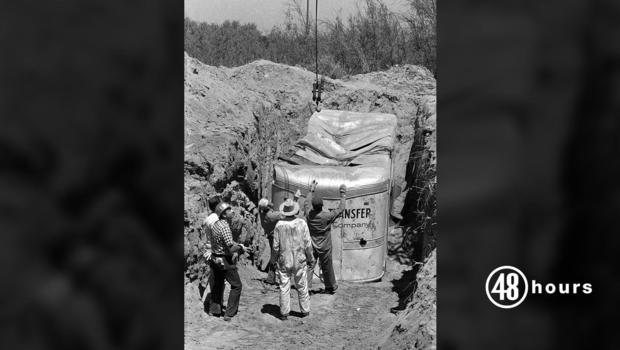
37 Photos
Chowchilla bus kidnapping: Rare photos from one of the largest abductions in U.S. history
A look inside the truck trailer where 26 abducted school children and their bus driver were buried alive — and later escaped
Inside the vans, the kidnappers had constructed makeshift jail cells by installing wood paneling and even painting the windows. No one could see in or out.
Jennifer Hyde: It was pitch dark.
Larry Park: As a 6-year-old … the only way that I can describe this darkness is that it was trying to get me.
The kidnappers sped off with the children caged in their mobile prisons.
Jennifer Brown Hyde: And I felt like I was an animal going to the slaughterhouse.
Around that time, Jennifer and Jeff’s mom, Joan Brown, came home from work to an empty house.
Joan Brown: The children were not there. No peanut butter on the counter, no chairs out there, well … they just weren’t there.
As one hour turned to two, worried parents began helping the police retrace the school buses route, crisscrossing dozens of rural roads.
Joan Brown: Where were those children? Twenty-six of them and a bus driver? Nowhere.
And then, just before sunset, a police pilot spotted the big bus about seven miles outside Chowchilla, hidden in the dry riverbed.
Sheriff Ed Bates | Madera County, California: You would only see it from the air.
Madera County Sheriff Ed Bates rushed to the scene. His deputies had already found the bus empty. The children and their driver gone.
The tire impressions found in the sand led straight to the front door of the bus.
Sheriff Ed Bates: Obviously someone had backed their vehicle up to the doors of the bus.
Sheriff Bates was convinced the children of Chowchilla had become the victims of a brazen and bizarre, mass kidnapping.
Sheriff Ed Bates: I called the governor. I said, “I need some help down here.”
Sheriff Ed Bates: I had the parents all assembled there in the fire station. … Well, you could just look at their faces, and the anxiety and the fear was there.
Sheriff Ed Bates: I told them, I called the FBI. … And all of a sudden, I have 30 FBI agents there.
As Sheriff Bates continued to widen the investigation, the children continued to suffer inside the sweltering, pitch-black vans.
Jennifer Brown Hyde: Didn’t know where we were going. Didn’t know what they were going to do with us. … We drove what seemed like for hours upon hours upon hours.
Larry Park: And I remember that I kept falling asleep … and coming back awake. … I would dream … about being – [takes a long pause] — I would dream about being up in the forest where my family would go camping.
Jennifer Brown Hyde: We all tried to comfort each other.
AUDIO: JENNIFER BROWN, AGE 9: And a few of my little friends that are 5 and 6, they came over and started laying on me and crying. And I told them be brave because it’s going to be alright …
Then, the vans started to slow down. The kids could feel it pulling off the road, lurching from side to side on rough terrain, before coming to a stop – after nearly 12 unbearable hours.
Larry Park: They opened up the door and they took Ed Ray out first. They shut the doors back. And then there was nothing. There was no sound.
Jennifer Brown Hyde: And I remember they would just grab the first kid that was inside the door … They opened the door and they grabbed somebody else. … Take one of us out and close the door. One by one they would take one of us out and close the door …
Larry Park: And they just kept doing that. They would open up the door …they’d take a kid. They’d close the door. It’d be a couple of minutes and then they would open the door again.
Jennifer Brown Hyde … and I kept scooting to the back of the van, and I thought maybe if I hide in the corner, they won’t come for me.
But they did.
“THE HOLE”
After almost 12 grueling hours in darkness, the kidnappers pulled Jennifer from one of the vans.
Jennifer Brown Hyde: I didn’t know if it was in the desert, at the beach. In the side of a mountain? I had no idea where we were. I didn’t even know if we were in California.
AUDIO: JENNIFER BROWN, AGE 9: One guy asked us our name. We told it to him. One guy asked us our age. And we told him our age.
Jennifer Brown Hyde: And then I looked. They had a wooden ladder down into a hole in the ground. … And then I remember them telling me you need to climb down there. You need to go down there. And I thought, “Oh, they’re sending us to hell.” I didn’t know where we were going.
Down underground, Jennifer found herself in an old truck trailer. In fact, the kidnappers had buried it. Ed Ray and the rest of the children from her van were there too.
Jennifer Brown Hyde: I’ve always referred to it as “the hole.”
“48 Hours” obtained rarely-seen photos from inside the hole.
Larry Park: There was a table set up in the back … It was surrounded with jugs of drinking water and then on the table there were different food items.
Jennifer Brown Hyde: Boxes of cereal, peanut butter and loaves of bread. … They had made toilets in the wheel wells. They had cut holes in ’em for toilets.
Jennifer Brown Hyde: We could hear fans. So, we knew that there was some sort of ventilation.
Michael Marshall, 14, was still in the other van with some of the youngest children.
Michael Marshall | Survivor: I just remember the kids got a hold of me and were holding onto me. And just scared out of their – you know, we were all – just scared out of our wits.
As they did before, the kidnappers removed the children one by one. Michael and the youngest, 5-year-old Monica Ardery, were the last ones left in the van.
Michael Marshall: It was just me and her.
Not knowing what had happened to the other children or if they were even alive, Michael says he couldn’t bear to hand Monica over to the kidnappers. So, when they opened the doors again, he went first.
Michael Marshall: I had to take her hands from mine and rip —and tear them apart, say it would be OK. And go with them and leave her. … That was hard.
Michael Marshall: As soon as I got on that ladder and took a step down … and I heard the rest of the kids say, “It’s Mike. … It’s Mikey. Michael.” And I realized that everybody was alive.
And to his relief, not long after, Monica came climbing down the ladder. They were all together again.
Michael Marshall: We’re OK. We’re OK. We’re OK. So right now, so far, we’re all right.
But the sense of relief was short-lived.
Jennifer Brown Hyde: Before I knew it, the ladder was gone. They threw a roll of toilet paper down and said, “We’ll be back for you.” And that was it.
The kidnappers then covered the opening with a manhole cover.
Michael Marshall: I remember it just went dark. … And then you just hear the material getting thrown on us … we were being buried alive.
They were buried 12 feet underground.
Larry Park: Ed Ray and Mike Marshall they looked at every corner, every wall … for an escape route. They got underneath the manhole cover and pushed up on it. And they couldn’t move it. So, Ed Ray determined that it was time for everyone to get some rest.
The minutes and hours ticked by.
Michael Marshall: … It would be silent and then somebody would bust out crying and the hole would just erupt. Everybody’s crying.
Michael Marshall: The thing that made me cry was not being able to say goodbye to my mom. … And I’m remembering the last time that I saw her [emotional] and wishing I could have told her goodbye.
CBS NEWS REPORT: Throughout much of this day, parents and other family of the missing children came to the command post set up in downtown Chowchilla to try desperately to fathom some reason out of this madness. Carol Marshall’s 14-year-old son Mike was another on the bus.
REPORTER: Any chance at all this could be a terrible hoax or joke that someone is playing?
CAROL MARSHALL: I imagine there is a chance. I hope that’s all it is.
This was one of the largest kidnappings in U.S. history.
CBS NEWS REPORT: So far there’s been no word from any abductors …
Sheriff Ed Bates: Two heavily-laden [sic] vehicles had taken 26 children and their bus driver. That’s not easy to do. And how did they control them? And what did they do with them?
As investigators intensified their search, Jennifer and Jeff’s mom Joan waited by the phone hoping to hear news about her children.
Joan Brown: I remember later that day, praying and saying to God that if you bring them back … I will promise you that I will — and then I stopped because there was nothing I can offer in exchange for my children.
They had been in the hole for almost 12 hours and the conditions were deteriorating.
Jennifer Brown Hyde: We had eaten the food. … The fans on the ventilators stopped.
Jennifer Brown Hyde: My little brain started to grasp the concept of we may really not go home.
Larry Park: There was this one boy. … And he kept kicking blocks out from underneath the 4×4 pillars. And so, the roof of the van was starting to cave in. The seams were breaking. Dust was flowing through. And I remember children just screaming and crying. … The sides of the van were bowing in. … I knew that I was going to die. I knew it.
Jennifer Brown Hyde: We thought, and they said — the older kids and Edward — if we’re going to die, were going to die trying to get out of here.
THE ESCAPE
Jennifer Brown Hyde | Survivor: As a young kid, you don’t have a lot of sense of time. … There was no sunlight. So, you couldn’t tell if it was day or night. … We were out of food, we were out of water, the roof was caving in…. It just was a desperate situation.
Larry Park | Survivor: So, Ed Ray and Mike Marshall … took a bunch of these mattresses that we were laying on and they stacked them on top of each other right underneath the manhole cover.
They took turns pushing up on it.
Michael Marshall: … And I’m giving it everything I got, and all the kids are cheering me on. You know, “Come on Mike, you can do it. You can do it.” And then all of a sudden, they said, “It moved, it moved.”
But they were far from being free. The children would quickly learn that escaping was not going to be easy.
The kidnappers had put truck batteries and dirt on top of the manhole cover and had constructed a wooden box around it. Once the manhole cover was moved, that box was just big enough for Michael to stand in.
AUDIO: MICHAEL MARSHALL, AGE 14: Edward squeezes me through this half-foot hole.
Like Jennifer, Michael Marshall made a recording about his experience.
AUDIO: MICHAEL MARSHALL, AGE 14: I get on top of it and I start pounding on this box. Start hitting and pounding, hitting and pounding.
Larry Park: He dug until he was exhausted and then he kept on digging. There was no quit in him.
AUDIO: MICHAEL MARSHALL, AGE 14: None of us knew if when we got out, they were just going to be standing there with shotguns at our head and stuff, so we were kind of … pretty scared.“
Larry Park: Then suddenly this ray of sunlight [cries]. This ray of sunlight came down into the opening. And it was catching the dust. And the dust particles looked like a bunch of shooting stars. … There was this airflow that came out of the van [pauses] and I knew we were free. I need a minute. [Gets up from his chair, overcome with emotion.]
Michael Marshall [sighs, then pauses]: The air and the light it was beaming coming through …
Larry Park: Mike Marshall, actually, brave person that he is, crawled out of the hole first.
Michael Marshall: And I stuck my head out and … I didn’t see anybody. … I could see we were in the hills, we were in big trees.
Jennifer Brown Hyde: It looked totally like a sand dune. There was no way to know that there was anything below. There was no way to know that we were in there. … It was totally camouflaged.
It was approximately 8 p.m. on July 16 when Ed Ray and the children emerged. They had been in the hole for nearly 16 hours.
Jennifer Brown Hyde: We all just scurried like a bunch of little mice. And we heard some noises, machinery and equipment. And then we thought, “Oh my God. What if it’s them? What if we’re going right to the men that took us?”
But they felt they had no choice but to keep going.
Jennifer Brown Hyde: We started walking toward the equipment that we heard. … We saw conveyor belts and excavators and large machinery … It looked like “The Flintstones.” … And all these men with hard hats came to us and looked at us like, “Who are you?” … And I remember Edward saying, “We’re from Chowchilla. And we’re lost.”
The kidnappers had buried them in a rock quarry in Livermore, California, 100 miles away from Chowchilla. When police arrived, as evidence they took photos of every child. Then they transported them to the closest place that could hold them — the Santa Rita Rehabilitation Center, a local jail.
Jennifer Brown Hyde: I remember going in in the bus and you could see the prison wire. … And you thought well, “they’re taking us into jail.”
Jennifer Brown Hyde: They took us into what looked like classrooms. … They brought us apples and soda.
AUDIO: JENNIFER BROWN, AGE 9: They had these coveralls. … And all these little kids go into ’em and we had to roll the pants about 10 feet. And we rolled the arms up and we were all sitting there — some of ’em didn’t roll our arms up and we sitting there flapping our arms. We said, “Hey we can fly!?”
Over the next few hours, Ed Ray and the children were examined by doctors. They were also questioned by police. But they could tell them very little about the kidnappers.
Jennifer Brown Hyde: How do you describe somebody that has pantyhose over their face?
After four long hours of questioning, they were finally allowed to go home.
Michael Marshall: They put us on a Greyhound … escorted us back to Chowchilla.
Larry Park: It was time for mom and dad. I just wanted my mom and dad.
It had been almost 36 hours since their traumatic ordeal began.
Jennifer Brown Hyde: The scene was like a mob scene … news cameras and TV lights.
AUDIO: JENNIFER BROWN, AGE 9: Everybody stated saying, “are you all right Jennifer” and all this stuff and I said “Yeah. I’m fine.” Then whenever we got into this room, I found my mom and my dad.
AUDIO: MICHAEL MARSHALL, AGE 14: We pulled up to Chowchilla and I was asleep. … So, when I got off the bus everybody started taking pictures of me saying, “Hi Mike, how you doing? What was the pit like?”
Larry Park: This man carried me off the bus. And he put me in my mom’s arms, and I said, “Hi mom,” and fell asleep on her shoulder. …. I felt like I was finally safe [emotional].
CBS NEWS REPORT: Ever since the kidnapping a little more than a week ago, the parents and relatives of the 26 children have been spending a lot of restless nights, waiting for each new development and hopeful that authorities will soon apprehend …
Joan Brown: We had no idea what our kids had been through. None whatsoever. But you knew things were not right in their world.
HAROLD DOW | CBS NEWS: How does it feel to be a big movie star?
JENNIFER BROWN, AGE 9: I don’t know. I’ve never been a movie star before.
CBS NEW REPORT: For 9- year-old Jennifer Brown, the experience has allowed her to still see the world with compassion.
HAROLD DOW | CBS NEWS: Why do you suppose that they would do something like that?
JENNIFER BROWN: I don’t know. They didn’t have enough love.
Jennifer Brown Hyde: At that time, the kidnappers were still at large. I don’t think I relaxed and didn’t have nightmares for days if not months.
Joan Brown: She had horrible nightmares. … she would run screaming into our bedroom, and she wasn’t even awake … And she would tell us later that she dreamt that they were lined up and shot.
Larry Park: One night … I was dreaming that I …. was falling down this hole and I was trying to get out. … I started screaming for my mom. Mom came in. … And all I could do was cry. And all she could do was hold me. There was nothing more that could be done.
THE KIDNAPPERS
In the days following the kids escape, investigators searched the rock quarry and the van that had been their underground tomb hoping they would find clues that would lead them to the kidnappers.
Prosecutor Jill Klinge | Alameda County: They looked to see who would have keys to the quarry. … In order to have access to bury this moving container undetected, you would have to have access. Fred Woods had keys to that quarry.
Frederick Newhall Woods, 24, the son of the owner of the quarry, immediately became a person of interest.
Prosecutor Jill Klinge: …Then they looked at the ledger, surveillance tapes and started to put it all together at that point.
Security guards told investigators they had seen three young men digging a large hole in the quarry months before the kidnapping. One of them they said was Fred Woods.
And Woods had a record. Two years earlier, he had been charged with grand theft auto. Arrested with him were two of his friends – James Schoenfeld, Fred’s partner in a used car business, and James’s younger brother, Richard. All three were from wealthy families who lived in San Francisco’s nicest suburbs. They escaped with a fine and probation.
Prosecutor Jill Klinge: They’re young. They’re white. They’re wealthy. I think it added a component of fascination to the story because it was so unlikely that three men such as these would commit such an atrocious crime.
Investigators executed a warrant to search Fred Woods’ father’s estate.
RICHARD THRELKELD | CBS NEWS: For the last two days, the Woods estate has looked like an armed camp, dozens of officers looking for anything.
What they found there was a treasure trove of evidence.
Prosecutor Jill Klinge: We were able to recover one of the guns that was used during this kidnapping.
Now 43 years later, the Alameda County District Attorney’s Office has opened the evidence vault to “48 Hours.”
Prosecutor Jill Klinge: This crime was planned out for a year-and-a-half in intricate detail.
Prosecutor Jill Klinge: You actually have a document labeled “plan.” And it sets out … the way they were going to commit the kidnapping and then they on the right-hand side put … how they would compensate or deal with what could go wrong.
They also recovered a draft of a ransom note.
Prosecutor Jill Klinge: The draft of the ransom note says $2.5 million, but in actuality, they were going to ask for $5 million from the State of California.
But the kidnappers were never able to deliver their demand.
Prosecutor Jill Klinge: They tried to call the Chowchilla Police Department. Because of the number of calls that were coming in worldwide … the phone lines were jammed. They couldn’t get through. So, they took a nap. And by the time they woke up, they saw on the news that the kids had been found. So, they were never able to request the ransom.
RICHARD THRELKELD | CBS NEWS: And so the search is on nationwide for these three men …
Arrest warrants were issued. Richard Schoenfeld turned himself in. Fred Woods and James Schoenfeld fled California, but not for long.
HAROLD DOW | CBS NEWS: James Schoenfeld was captured at dawn today. Police say he ran hard, all over the Western United States, but he did not run well. … Frederick Woods was arrested by the Royal Canadian Mounted Police this afternoon, just across the Washington State border in Vancouver.
Jennifer Brown Hyde: I remember watching on TV … thinking they’re so young.
Hoping that the children could identify the kidnappers by their voices, the suspects were put in video lineups and asked to repeat phrases the kidnappers used:
RICK SCHOENFELD: Get to the back of the bus.
JAMES SCHOENFELD: Be quiet!
FRED WOODS: How are you kids doing?
So, what drove these young, seemingly well-off men to kidnap children for money? James Schoenfeld eventually said, despite their parents’ wealth, that he and Fred Woods were in serious debt.
He explained: “We needed multiple victims to get multiple millions, and we picked children because children are precious. The state would be willing to pay ransom for them. And they don’t fight back.”
Sheriff Ed Bates: I think that the two Schoenfelds did it just on pure persuasion by Fred Woods. Fred Woods … in my own personal opinion, and I have a master’s degree, I think he was a sociopath. Some might call him a psychopath.
With the overwhelming evidence against them, Woods and the Schoenfelds pleaded guilty to 27 counts of kidnapping for ransom and robbery. But they refused to plead guilty to the eight counts of bodily harm. Those charges would send them to prison for life without the possibility of parole. So, 16 months after their abduction, Jennifer, Michael and some of the other children faced the kidnappers in court. They testified that in addition to the emotional trauma, they had suffered physical wounds like cuts, bruises and burns.
Jennifer Brown Hyde: And the kidnappers were sitting to my left at a table. … I didn’t want to look at them. I remember giving my dad my gum because I told him I was going to spit my gum at them.
REPORTER AT COURTHOUSE: You say they would give you this funny look. What did that make you feel?
JENNIFER BROWN: Scared.
Jennifer Brown Hyde: I did my testimony. I answered my questions. And I left that courtroom with my head held high. And there was no way that I was going to let them see me cry.
WALTER CRONKITE | CBS EVENING NEWS ANCHOR: A California judge today imposed mandatory life prison sentences without parole on those three young men who kidnapped 26 Chowchilla school children …
Joan Brown: Life in prison without the possibility of parole. That was all we needed. That’s what we needed.
Jennifer Brown Hyde: I remember thinking they are going to jail … they’re not going to do this to anybody else. And that’s all that I need to know.
Life in Chowchilla had returned to normal. The survivors thought their nightmare was finally over. But it was just beginning.
A FRIGHTENING NEW REALITY
Just five weeks after being buried alive, the gutsy children of Chowchilla and their bus driver Ed Ray were hailed as heroes. There was even a trip to Disneyland.
Larry Park: And everyone thought that was great because the good memories of Disneyland would overshadow the bad memories of the kidnapping.
And when the kidnappers were sentenced to life in prison without the possibility of parole on February 17, 1978, the legal ordeal seemed to finally be over.
Jennifer Brown Hyde: In a way you try to be normal. But … when you’ve gone through something that’s so traumatic, it’s hard to go back and be a normal kid again.
The survivors struggled to move forward. But just four years after the kidnappings – a critical turning point that meant even more trauma.
Prosecutor Jill Klinge: The kidnappers’ lawyers appealed the finding of bodily harm. And the appellate court overturned it. And while acknowledging the horrific nature of the crime, stated that the injuries suffered did not rise to the level of bodily harm under the law.
Their sentence was thrown out. Fred Woods and the Schoenfeld brothers were resentenced to life with the possibility of parole.
Prosecutor Jill Klinge: They would get a parole hearing every one or two years depending on the decision of the parole board.
Larry Park: I felt like I had been betrayed by the justice system.
Larry and the other survivors faced a frightening new reality: the prospect of dozens of parole hearings for years to come and, someday, freedom for the kidnappers.
Prosecutor Jill Klinge: It was extremely difficult for the survivors.
Just six years after the kidnappings, the parade of parole hearings began.
Prosecutor Jill Klinge: Every time one of the kidnappers came up for parole … it triggered all their fears and trauma from being kidnapped.
Prosecutor Klinge has handled the hearings since 2007.
Prosecutor Jill Klinge: They sit in the same room, and it’s not a large room, with the kidnapper.
For all three kidnappers, Klinge says, there have been about 60 parole hearings to date.
Prosecutor Jill Klinge: It takes the victims back to the day this happened, back to when they were 5 or 10 or 6.
Prosecutor Jill Klinge: The one thing that always sticks with me is they will never know who they would have been, or what their life would have been like, if they hadn’t been kidnapped.
Larry Park: By the time I turned 10 years old, I was just an angry child.
Growing up, Larry Park’s anger often turned to rage. His parents, fearing he was capable of violence, placed him in a facility for youth offenders when he was 15.
Larry Park: By the time I was 21, I was using meth. I was smoking crack. I was doing acid. … And I was just angry.
Michael Marshall: I could see years ahead of me. And then after the kidnapping, I could not see tomorrow.
Michael Marshall, the hero who never quit digging in the underground prison, left Chowchilla to become a rodeo cowboy and lost his way.
Michael Marshall: I went to bed at 18 drunk and hung over and blacked out. And woke up about 48, you know, with a hangover, blurry.
Sheriff Ed Bates: The victims are the ones that are being punished and always will be.
And they watched helplessly as Richard Schoenfeld was the first to be granted parole in June 2012, 36 years after the kidnappings. Three years later, James Schoenfeld was paroled.
Prosecutor Jill Klinge: As far as I know they have not been in any kind of trouble, and I know they have not returned to prison.
The same cannot be said for Fred Woods.
Prosecutor Jill Klinge: Fred Woods’ behavior in prison is what keeps him in prison.
Long considered to be the ringleader behind the kidnappings, Woods, now 67, has repeatedly been caught with pornography and cell phones in prison.
Prosecutor Jill Klinge: And that’s not allowed. … And one of the best indicators of an inability to obey the laws in society is that you can’t obey the rules in prison.
It was 28 hours of terror that will always be with the children, now middle-aged adults. Today, Michael, Jennifer and Larry have managed to find ways to get on with living.
Larry Park: Healing continues if you allow it.
Larry Park, 49, owns a handyman business and volunteers as a pastor at a local church. His nightmares have finally stopped. And he is sober.
Larry Park: I have nine years sober.
His sobriety was motivated by an epiphany about the kidnappers.
Larry Park: My resentment for them … was killing me. … One night I was laying in bed … and I said, “God, help me to forgive them.”
Larry met the men, shook their hands, and did forgive them.
Larry Park: It changed my life [cries]. … Something washed over me. … And there was peace like I had never known. I knew that day that I would be OK.
Until just recently, Jennifer Brown Hyde, a wife, mother and executive assistant, says she could not sleep without a nightlight.
Jennifer Brown Hyde: I’ve had family and church family … and co-workers that have piece by piece helped put me back together. … I want people to know that that little girl that was kidnapped and buried alive has managed to live a wonderful life.
Michael Marshall, 57, husband, father, and now a long-distance trucker, tries not to think about the kidnappers.
Michael Marshall: What they put my mom and dad through is something I can’t — I cannot forgive.
He’s been sober for 8 years with help from his family and his therapy dog Blue.
Michael Marshall: I rescued him before he was a year old. And now he rescues me every day.
On Tuesday, kidnapper Fred Woods was denied parole. He is eligible for parole again in five years.
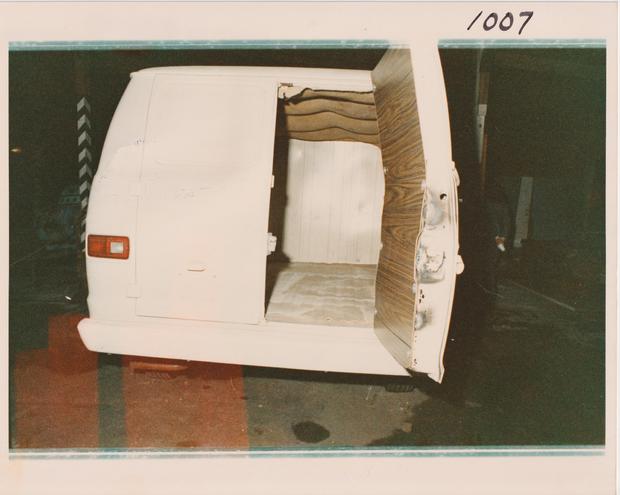
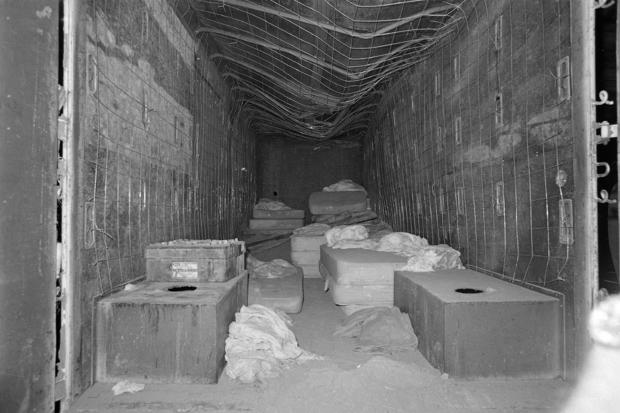
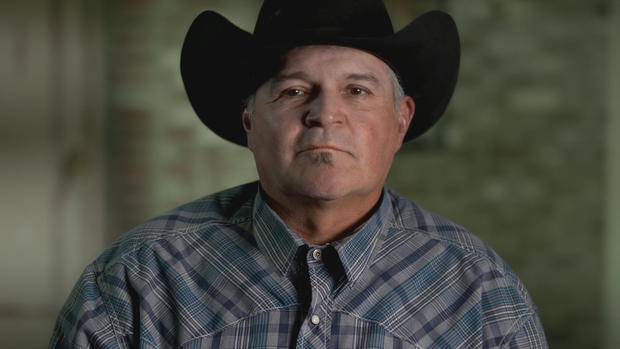
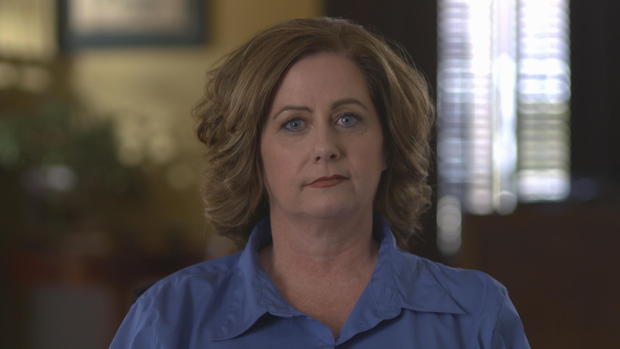
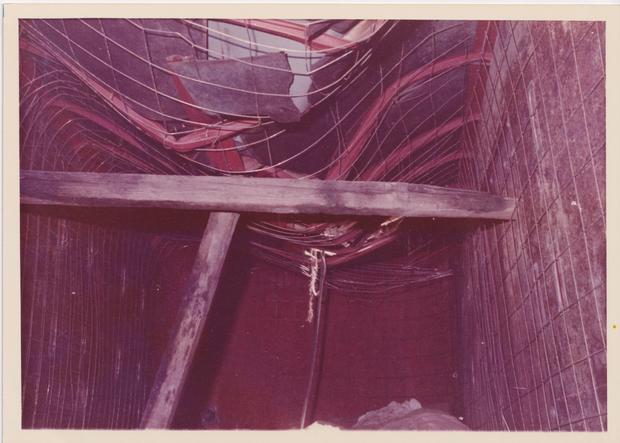
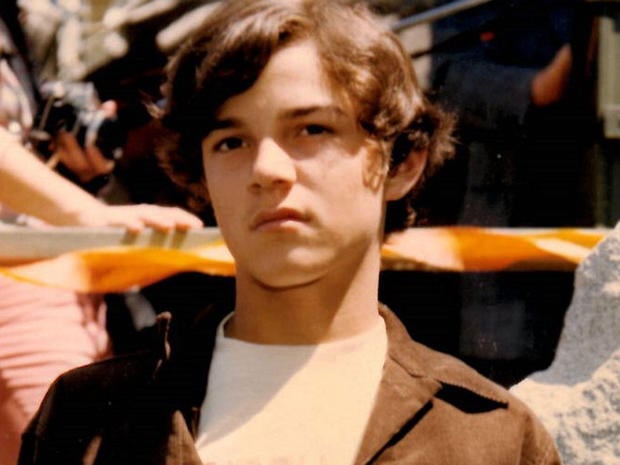
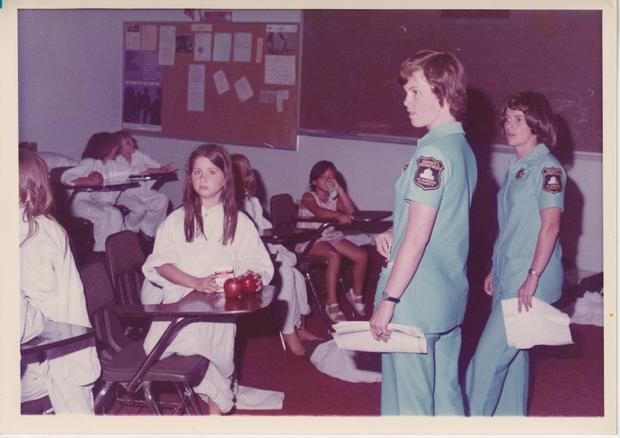
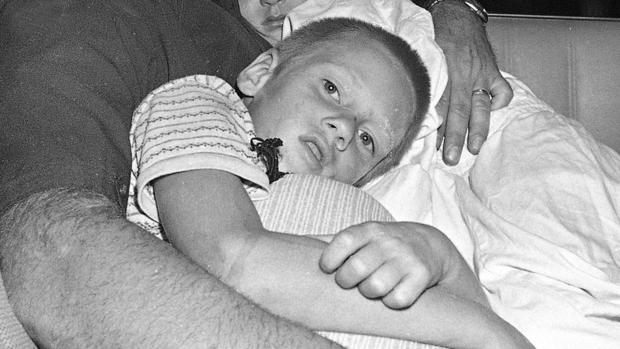
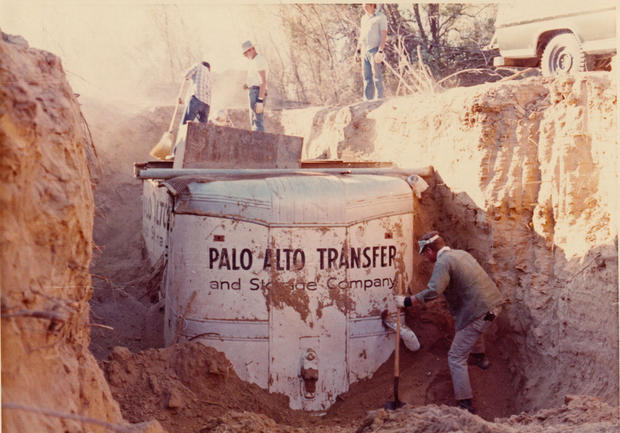
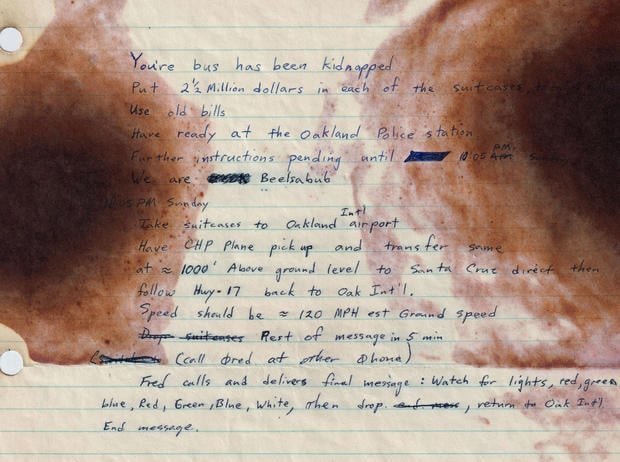
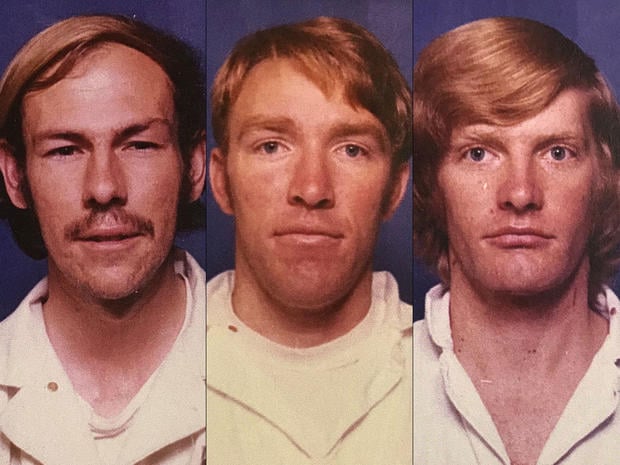
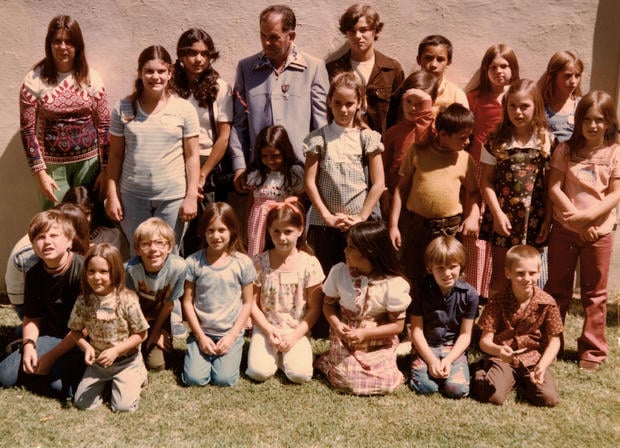
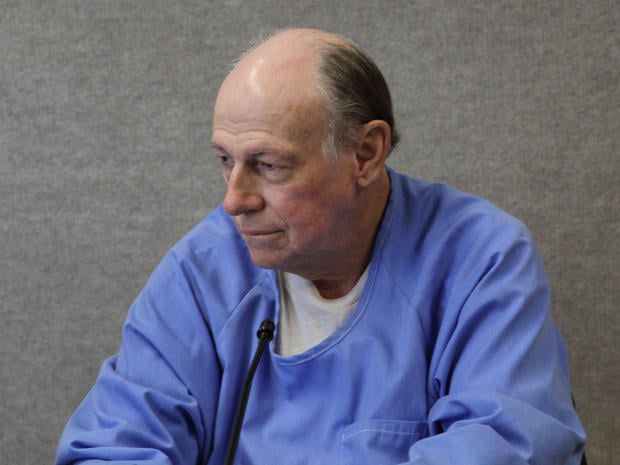
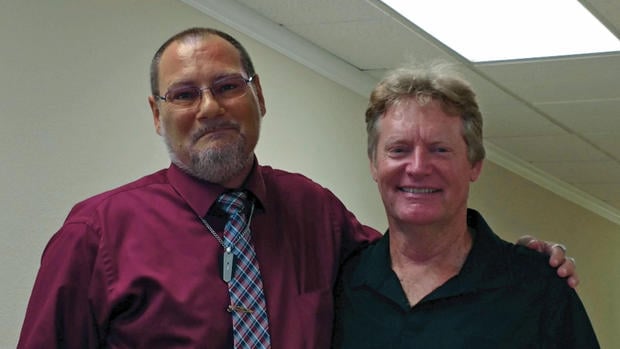

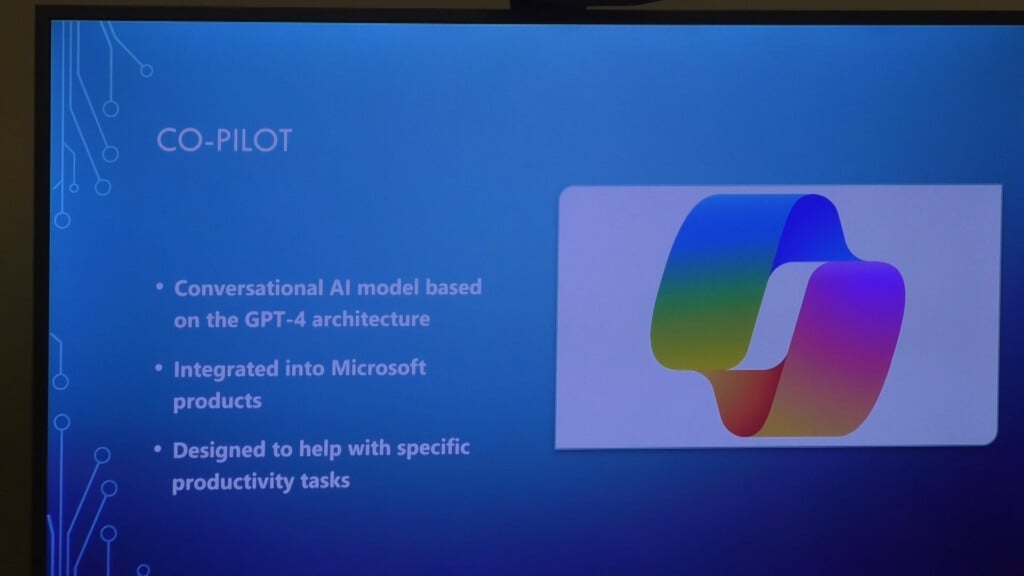
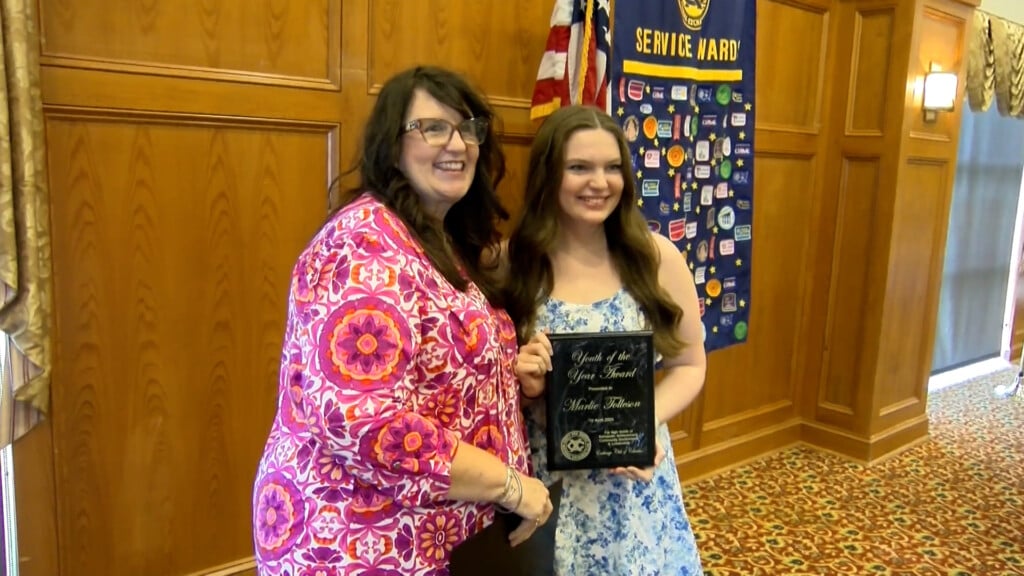
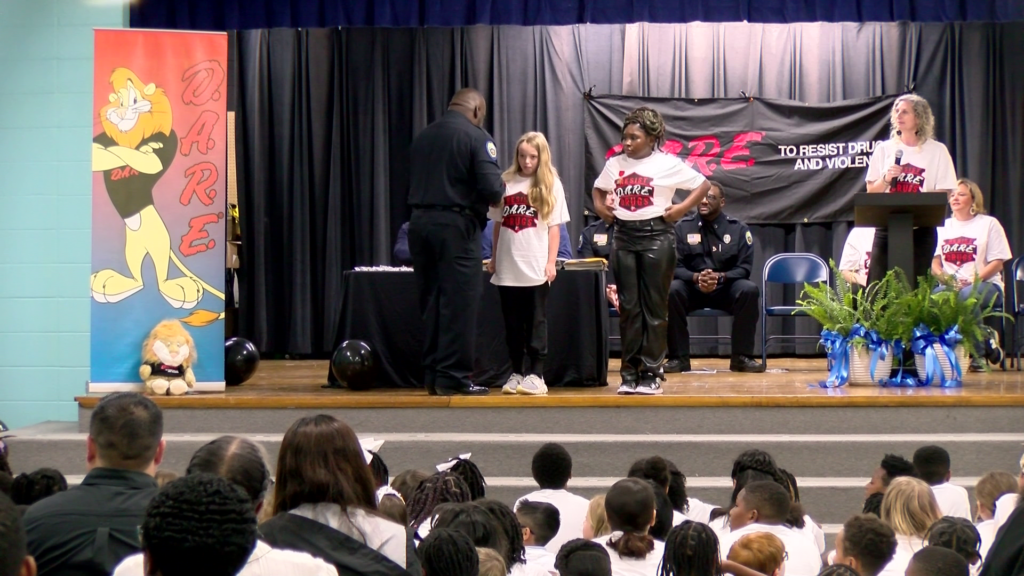
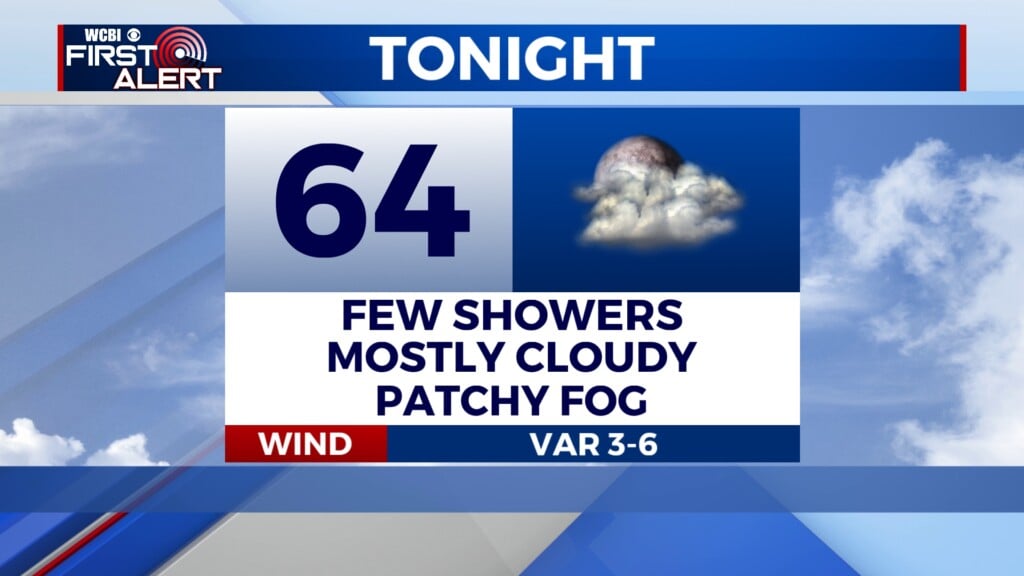
Leave a Reply